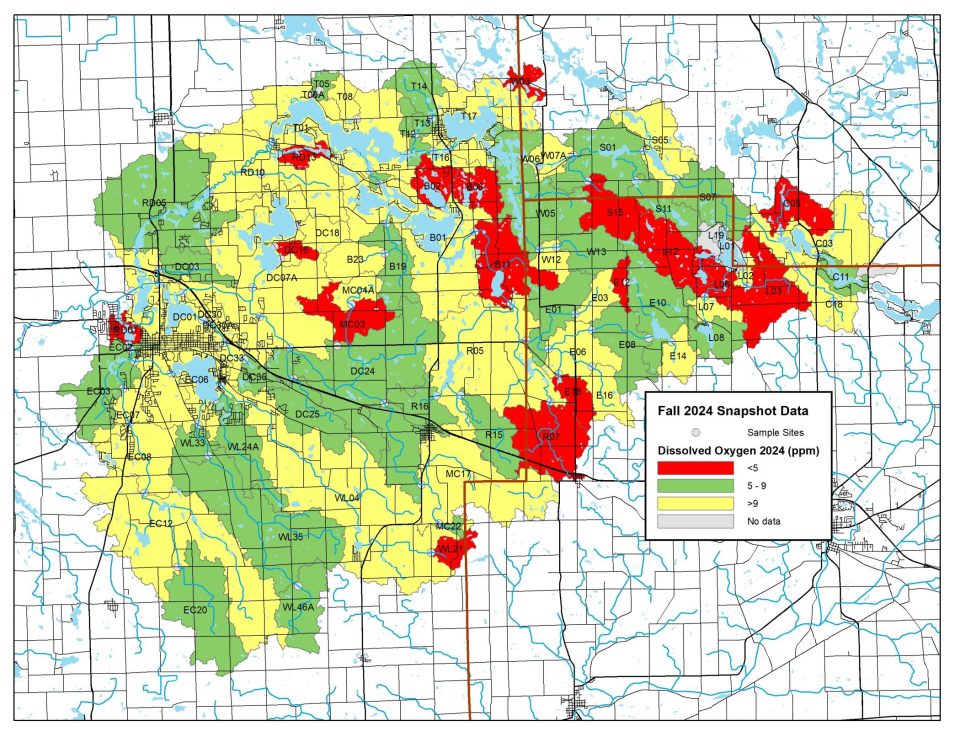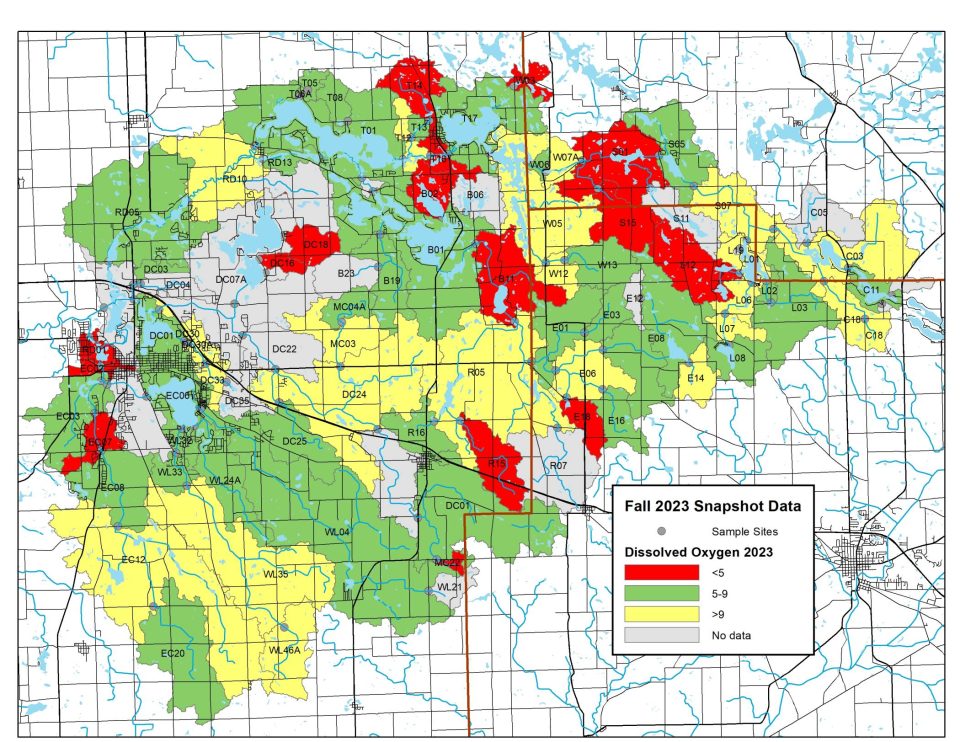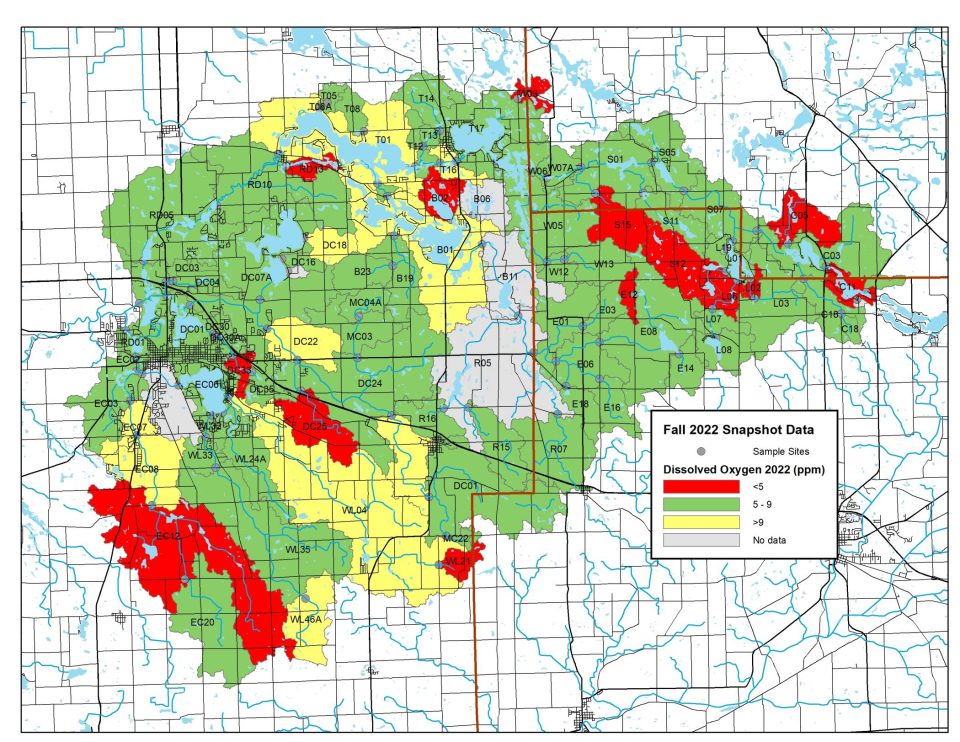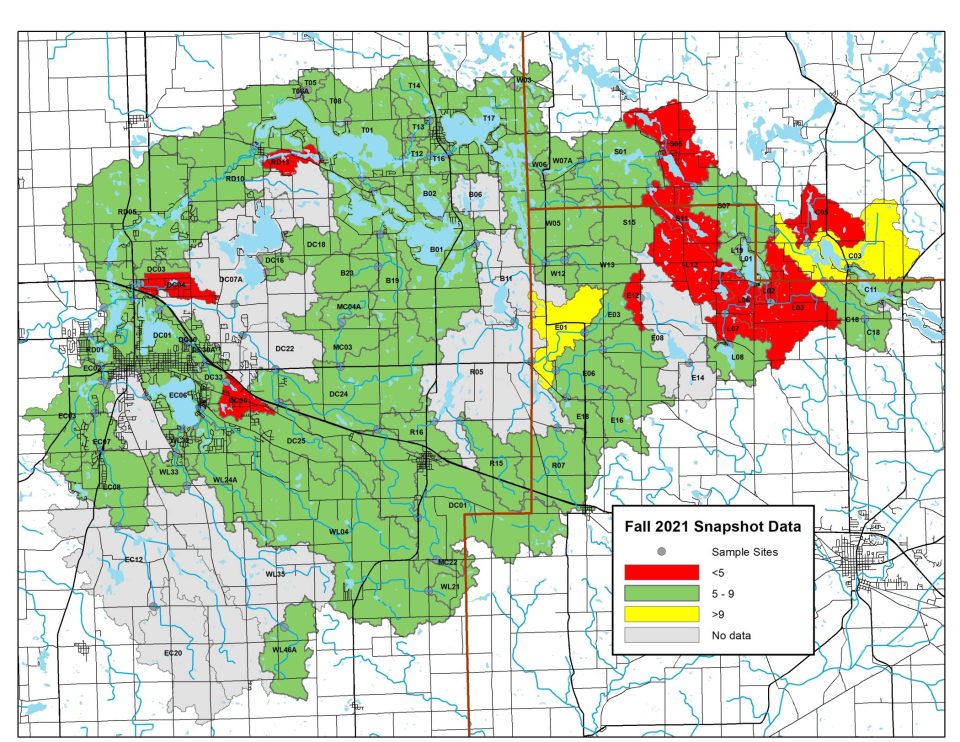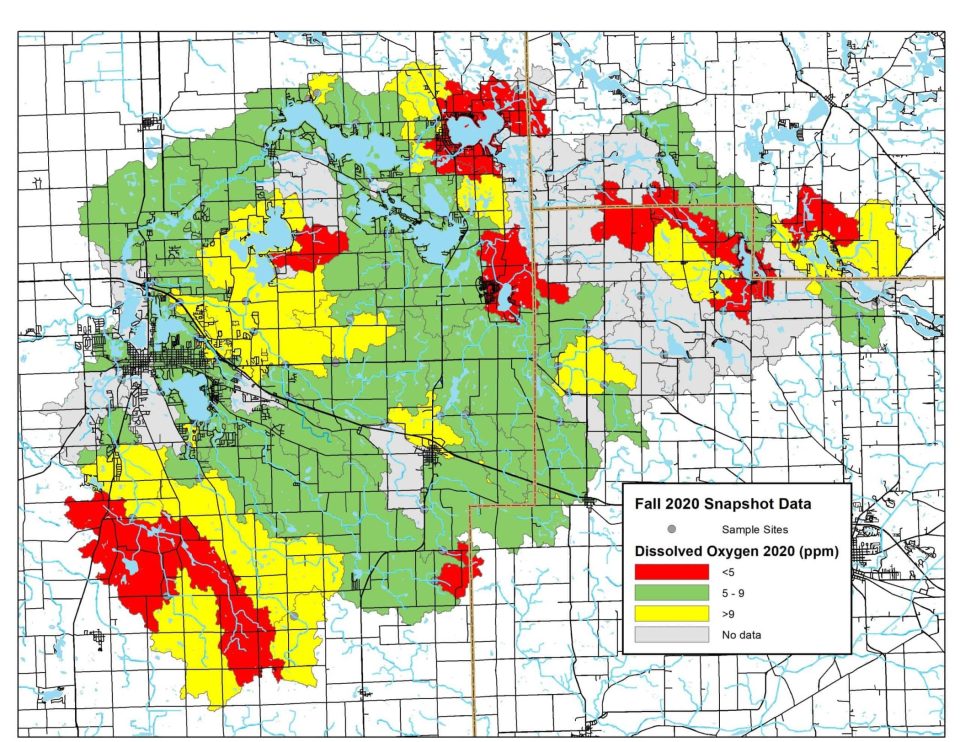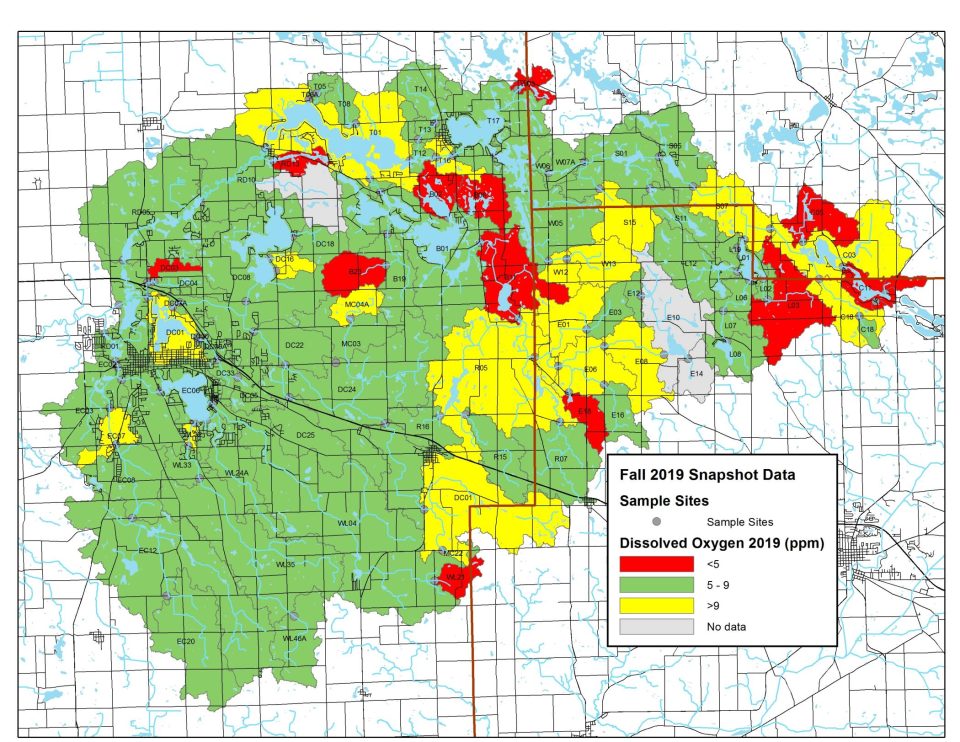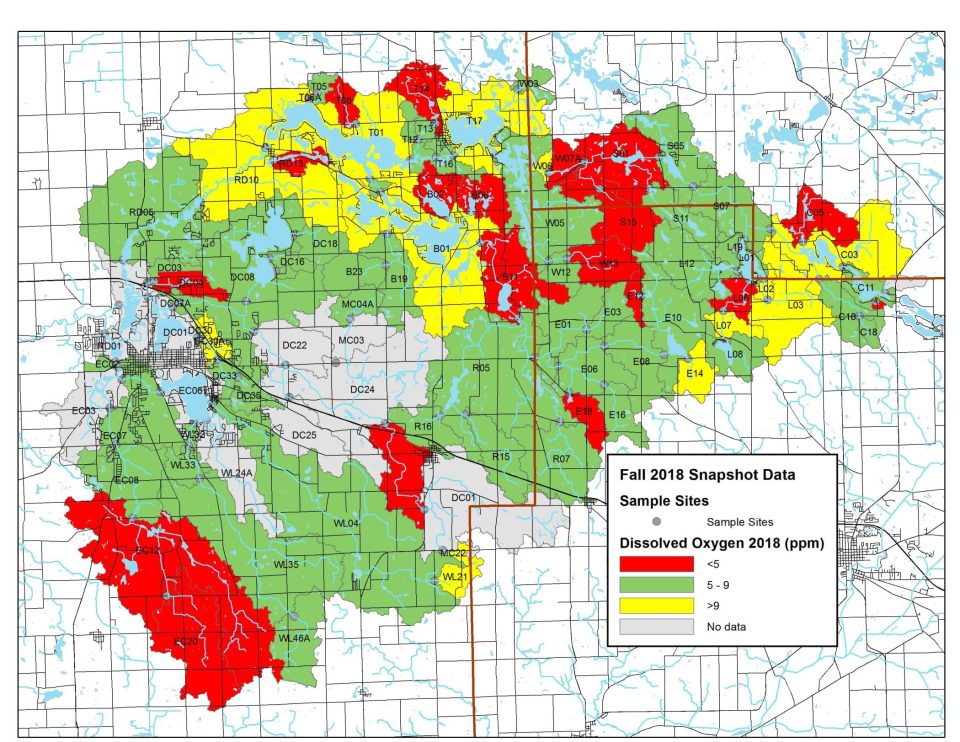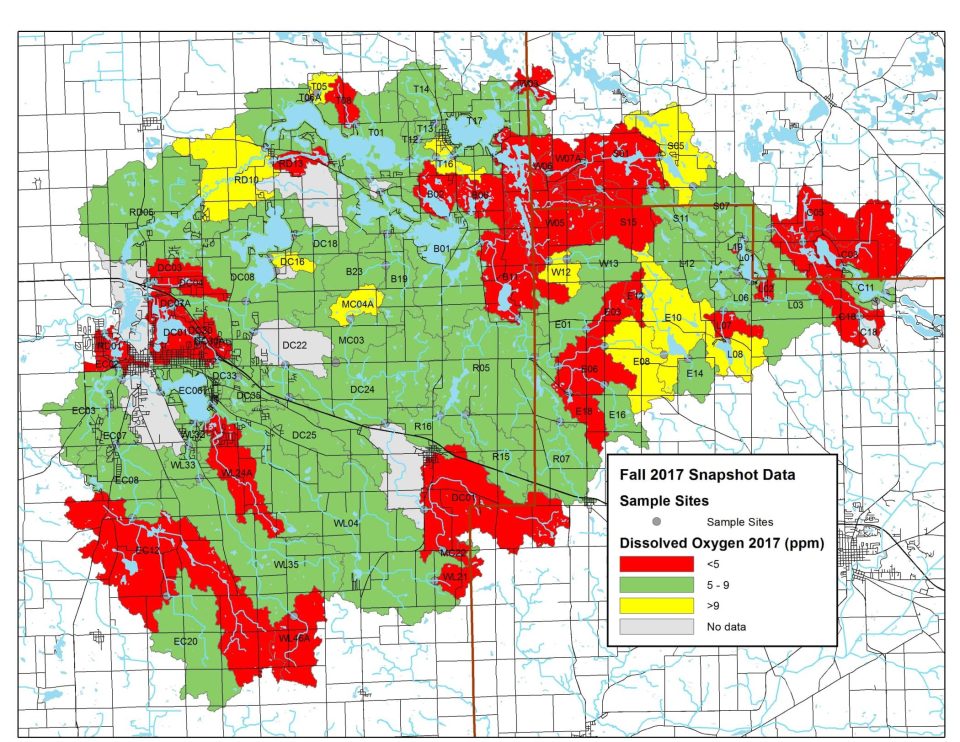Snapshot Day Results: Dissolved Oxygen
See Full Monitoring Results and Maps Below
Dissolved oxygen levels are a critical indicator of water quality.
Oxygen dissolved in water sustains life in aquatic communities. When oxygen levels are too low, many species can’t survive. Several factors affect dissolved oxygen levels, including flow, temperature, and the amount of organic material in lakes or rivers. For example, cold, moving water tends to contain more dissolved oxygen; warm, stagnant water contains less. Because bacteria consume oxygen from decaying organic matter, like leaves, excess organic material can lead to oxygen deficiency and create “dead zones” in lakes.
On Snapshot Water Monitoring Day, volunteers measure dissolved oxygen levels at sites throughout the watershed. Each year, we’ve found areas of moderate to critical oxygen depletion, some years more than others. Generally, this can be attributed to low water levels and too much decaying organic matter.
Explore full results below. Click on any map to zoom in.
2024 Dissolved Oxygen Levels
In 2024, we found an overall decline in dissolved oxygen levels across the watershed. Several testing sites showed moderate to critically low levels.
Most likely, this was due to a long period of drought leading up to Snapshot Water Monitoring Day. In drought conditions, water levels drop, reducing flow and circulation. Shallow, stagnant water also warms more easily. Both factors typically lead to lower dissolved oxygen levels.
2023 Dissolved Oxygen Levels
In 2023, we found mixed results in dissolved oxygen levels at sites across the watershed, with some overall improvement from the previous year. Several sites in the upper watershed showed very low dissolved oxygen levels.
2022 Dissolved Oxygen Levels
In 2022, we found an overall decline in dissolved oxygen levels across the watershed, with a few areas of moderate to critical concern.
2021 Dissolved Oxygen Levels
In 2021, we saw an overall improvement in dissolved oxygen levels across the watershed. Several testing sites in the upper watershed, near the headwaters, showed very low levels of dissolved oxygen, likely due to low water levels.
2020 Dissolved Oxygen Levels
In 2020, we found a slight increase in oxygen depletion from in the previous year.
2019 Dissolved Oxygen Levels
In 2019, monitoring results showed fewer areas of critical oxygen depletion than the previous year.
2018 Dissolved Oxygen Levels
In 2018, there were slightly fewer areas of oxygen depletion than the previous year, with the lowest levels concentrated in the southernmost part of the watershed.
